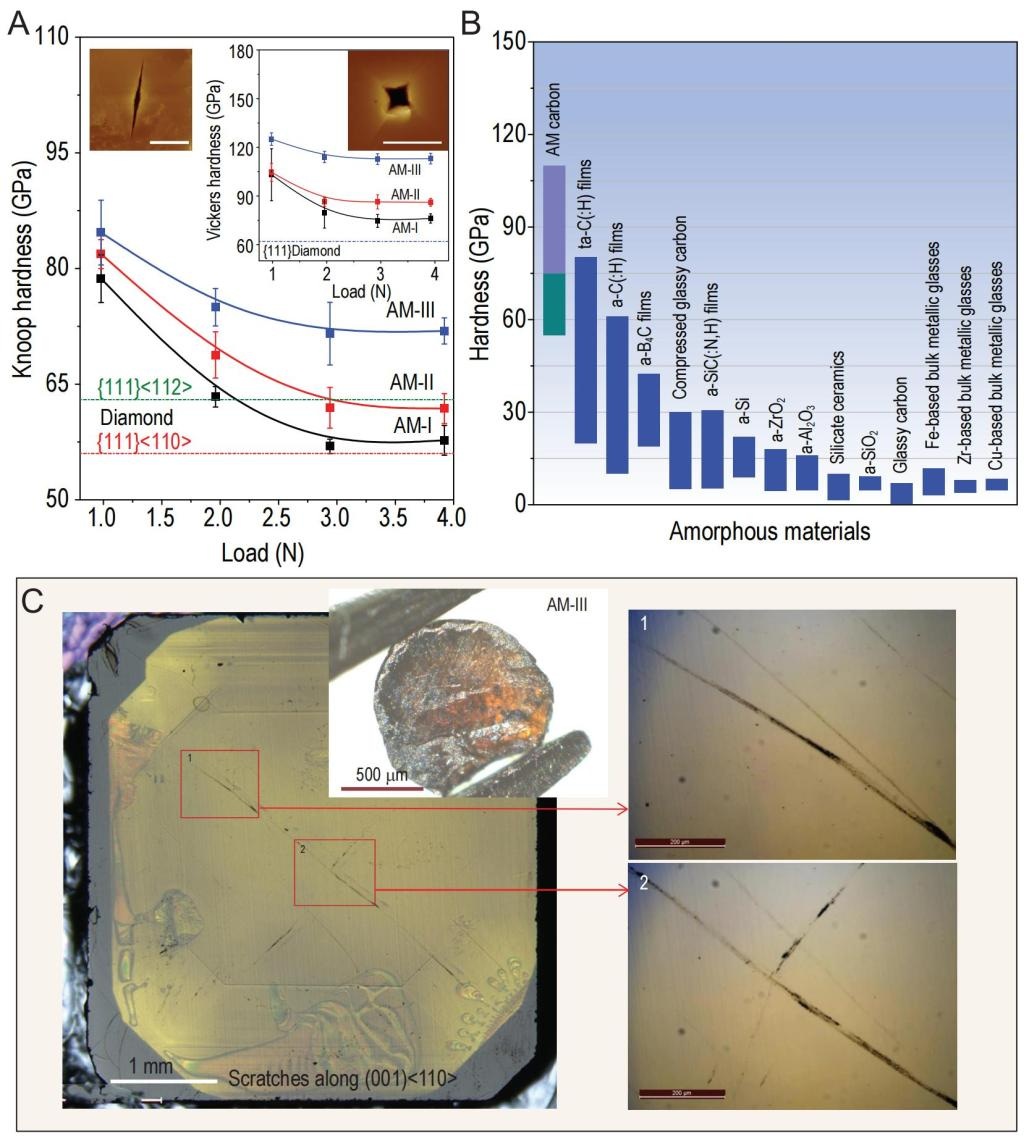[News Center] Recently, Zhao Zhisheng and other team members, from the research team led by Academician Tian Yongjun of the High Voltage Science Center of Metastable Materials Science & Technology SKL, Yanshan University, made important progress in the research of new amorphous carbon materials through cooperation with scientists at home and abroad. The research results, titled Discovery of carbon-based strongest and hardest amorphous material, are published online in the National Science Review dated August 5, 2021.

(A) Hardness of amorphous carbon; (B) Comparison of hardness with other amorphous materials; (C) Scratches left by scribing diamond (001) surface with AM-III amorphous carbon
As carbon is the basic element of organic life, it plays an indispensable and unique role in human survival, daily life and material production. Carbon has many allotropes, currently known as graphite, diamond, fullerene, carbon nanotube, graphene, graphyne, etc. These carbon allotropes exhibit very unique physical and chemical properties, and their discovery has greatly promoted the development of science and technology. People have never stopped exploring new carbon materials.
In this study, the researchers used fullerene C60 to trap a new sp2-sp3 hybrid amorphous carbon (AM-III) material under high temperature and high pressure. The internal sp3 content of this amorphous carbon is as high as 94%, and the average size of disordered units in the structure is about 4 Å. The diffraction information shows that its structure is mainly composed of disordered connections of diamond-like tetrahedrons, and there is no graphite-like structure, which is significantly different from the structure of previously reported amorphous carbon.
The density of AM-III is as high as 3.30 g/cm3, which is equivalent to that of diamond; its Vickers hardness HV is as high as 113 GPa, and its Knoop hardness is 72 GPa, so it can scribe the (001) surface of single crystal diamond (HV=103 GPa); its nanoindentation hardness is 103 GPa, which is higher than the highest hardness reported in the literature for diamond-like amorphous carbon film (ta-C); the compressive strength of its micron-scale cylinder is as high as 70 GPa, which is comparable to that of diamond. Therefore, it is the hardest and strongest amorphous material found so far. In addition, this kind of amorphous carbon is an optically transparent semiconductor material with a band gap of 1.5-2.2 eV, which is equivalent to the band gap of the most commonly used semiconductor amorphous silicon (a-Si:H) film, so it has potential application prospects in the photovoltaic field. This achievement has been granted a Chinese invention patent (patent number: ZL201910085279.0) and a Japanese invention patent (patent number: JP2020-009244).
This research project was funded by the National Natural Science Foundation of China (52090020, 51722209, 51672238, 91963203, 52025026, 51525205, U20A20238) and the National Key R&D Program of China (2018YFA0703400).